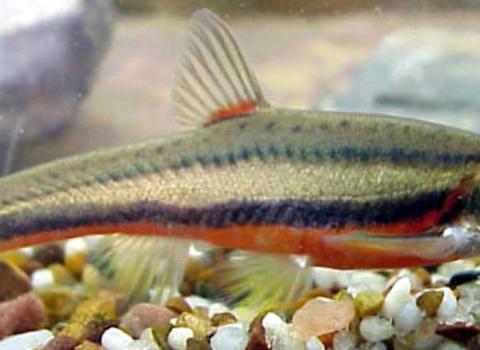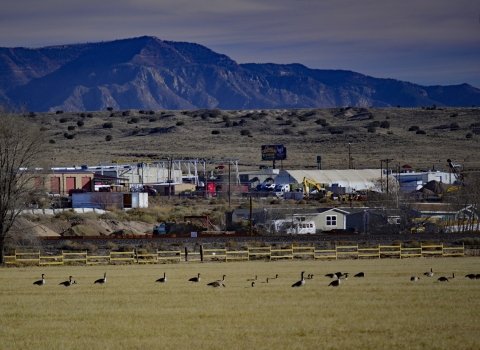Bumble bees are some of nature’s most efficient pollinators. They are essential for pollinating a long list of wildflowers and are especially important in the pollination of crops like tomatoes, peppers and cranberries. Unfortunately, like most pollinators, their populations are in decline nationwide. In the Pacific Northwest, recent research has linked the range-wide decline of the once common Western bumble bee (Bombus occidentalis) to a more recent factor – climate change climate change
Climate change includes both global warming driven by human-induced emissions of greenhouse gases and the resulting large-scale shifts in weather patterns. Though there have been previous periods of climatic change, since the mid-20th century humans have had an unprecedented impact on Earth's climate system and caused change on a global scale.
Learn more about climate change .
The study analyzed a range of climate change variables and showed that temperature had the largest effect on bumble bee occupancy. With their large body size and fuzzy hair, bumble bees are more adapted to colder climates and do not tolerate extended periods of high temperatures very well. This means bad news for bumble bees during heat waves, which have become more frequent and severe due to climate change. But direct heat-related mortality is not the only way heat waves are impacting bumble bees. Heat waves also tend to decimate native floral communities, limiting forage availability at a critical time in the bumble bee colony’s development. Unfortunately, heat waves are only predicted to increase in the years to come.
To conserve bumble bees in the face of a changing climate, scientists need to better understand their ecology. Overshadowed by other pollinator species in conservation and recovery for decades, most native bees are relatively new to conservation, with significant gaps in our understanding of these animals. In particular, there are significant parts of bumble bee ecology which are under studied – such as colony site selection and queen bee over-wintering dynamics. Both of these life history stages typically occur underground and can represent up to half of a bumble bee’s lifetime. These knowledge gaps make conserving, protecting, and recovering these species particularly challenging. The U.S. Fish and Wildlife Service and partners are doing a lot of really good work to fill these knowledge gaps and conserve bumble bees into the future.
For example, last year the U.S. Fish and Wildlife Service and partners excavated a Western bumble bee nest in Oregon to learn more about the species and how and why it might select certain colony sites. Parts of the colony are still undergoing testing, but the excavation and data gathered will be featured as a case study in a forthcoming white paper on bumble bee best management practices. The team will continue to look for more nests in Oregon at several locations this summer.
The U.S. Fish and Wildlife Service is also collaborating with the U.S. Geological Survey on research to better understand bumble bee diapause, also known as overwintering behavior, in Colorado. After pouring through data and scientific literature, the team hopes to make connections between species and their habitats such as how they are associated with different microclimate characteristics, soil types, and invertebrate assemblages. They hope the information gathered will help them find the best places to dig for nests, as they intend to do several test excavations of overwintering bumble bees next year. This research will help scientists be able to apply more meaningful conservation for bumble bees in the right places and at the right times.
Nine bees are currently listed under the Endangered Species Act. Seven of those are Hawaiian yellow-faced bees (Hylaeus spp.), and the other two are bumble bees: Rusty-patched bumble bee (Bombus affinis) and Franklin’s bumble bee (Bombus franklini). However, several other bumble bees have been petitioned for listing, including the American bumble bee (Bombus pensylvanicus) and Suckley’s cuckoo bumble bee (Bombus suckleyi). The Western bumble bee is currently being considered as well.
The U.S. Fish and Wildlife Service will continue working with partners to learn about and conserve pollinators, including bumble bees, across the nation in the face of a changing climate. Join us in the effort to conserve our beloved pollinators through planting a pollinator gardenand taking climate action.






